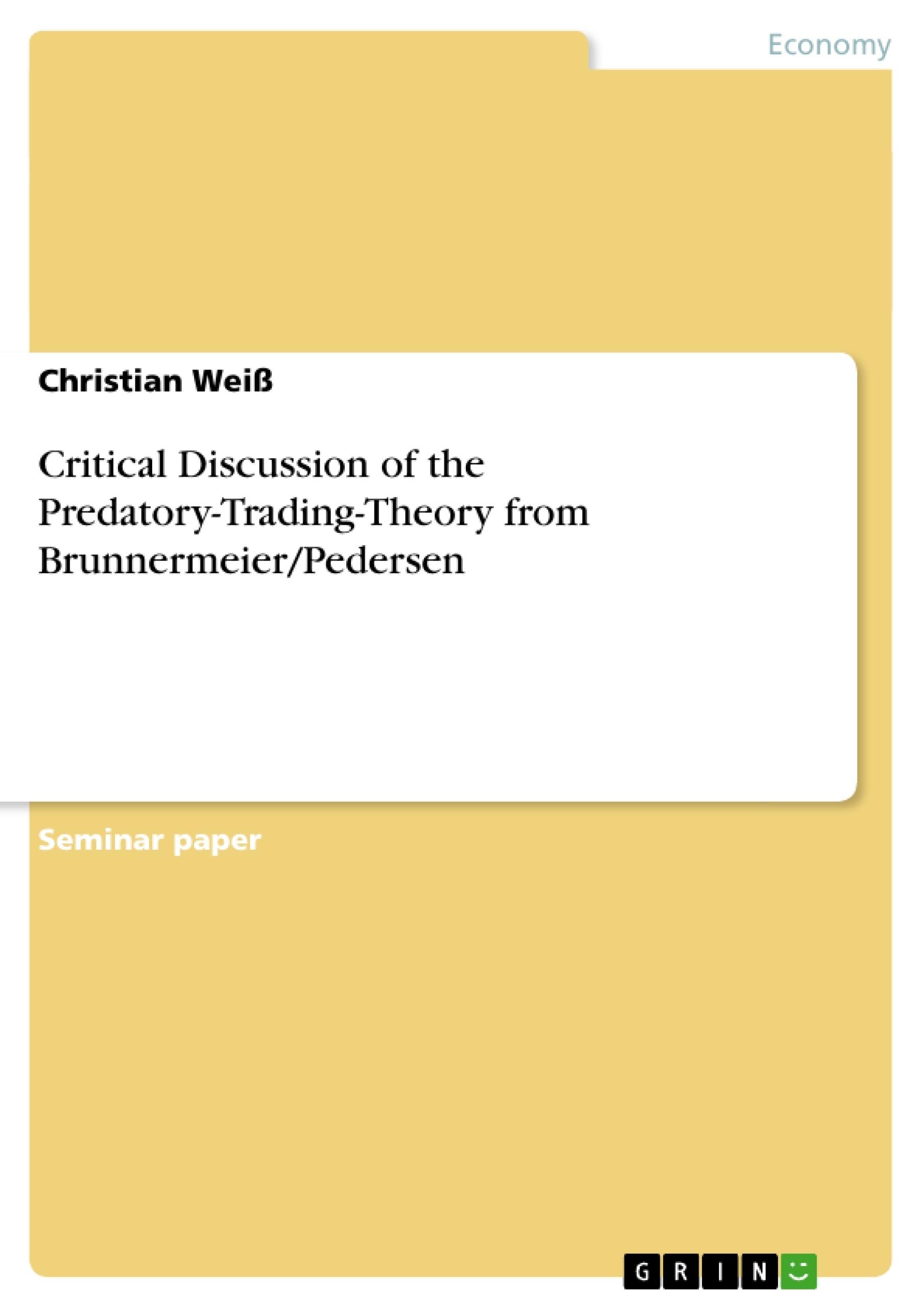What were the reasons for the great c rash of the Long-Term Capital Management (LTCM) of hedge funds in 19981? In short: predatory trading. But what is predatory in effect? How can predatory trading occur? What are the consequences of predatory trading? How can predatory trading be avoided? These questions will be answered in the following paper. The following description gives a first impression of predatory trading: “When you smell blood in the water, you become a shark. ... when you know that one of your number is in trouble ... you try to figure out what he owns and you start shorting those stocks ..."2The first part of this paper deals with the basics of the model of the predatory trading theory, the second part elaborates the advantages and disadvantages which are summed up in the last part.
Inhaltsverzeichnis (Table of Contents)
- Introduction
- Model
- Basics of the Model
- Preliminary Analysis
- The Predatory Phase
- Exogenous Distress
- Single Predator
- Multiple Predators
- Endogenous Distress, Systemic Risk and Risk Management
- Exogenous Distress
- The Investment Phase
- Further Implications of Predatory Trading
- Front-running
- Batch Auction Markets
- Critical Discussion
- Positive Aspects
- Negative Aspects
- Conclusion
Zielsetzung und Themenschwerpunkte (Objectives and Key Themes)
This seminar paper aims to provide a critical discussion of the Predatory Trading theory developed by Brunnermeier and Pedersen. The paper explores the mechanisms, consequences, and potential mitigation strategies associated with this phenomenon. The paper seeks to provide a deeper understanding of how predatory trading can occur and its impact on financial markets.
- The model of predatory trading
- The predatory phase and its impact on financial markets
- The role of distressed traders and predators
- The implications of predatory trading for systemic risk and risk management
- The positive and negative aspects of predatory trading
Zusammenfassung der Kapitel (Chapter Summaries)
- Introduction: This chapter sets the stage for the discussion of predatory trading, providing a brief overview of the concept and its relevance to financial markets. It introduces the key questions that will be addressed throughout the paper.
- Model: This chapter presents the core model of the Predatory Trading theory. It outlines the assumptions, key actors, and their motivations within the model. The chapter also discusses the dynamics of the model and how predatory trading occurs within the context of financial distress.
- Critical Discussion: This chapter provides a critical assessment of the Predatory Trading theory. It explores the strengths and weaknesses of the model, highlighting its potential contributions and limitations.
Schlüsselwörter (Keywords)
The key concepts and themes addressed in this seminar paper include: Predatory Trading, financial distress, systemic risk, risk management, arbitrageurs, long-term investors, market clearing price, liquidity, illiquidity, price impact, trading costs, endogenous default, exogenous default.
- Arbeit zitieren
- Christian Weiß (Autor:in), 2005, Critical Discussion of the Predatory-Trading-Theory from Brunnermeier/Pedersen, München, GRIN Verlag, https://www.grin.com/document/43609



